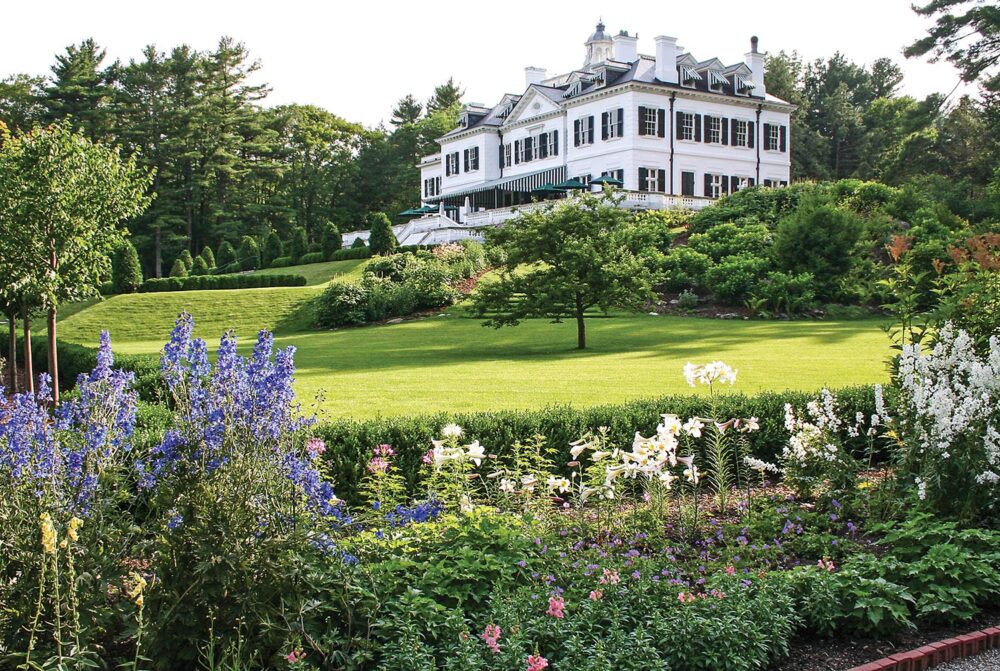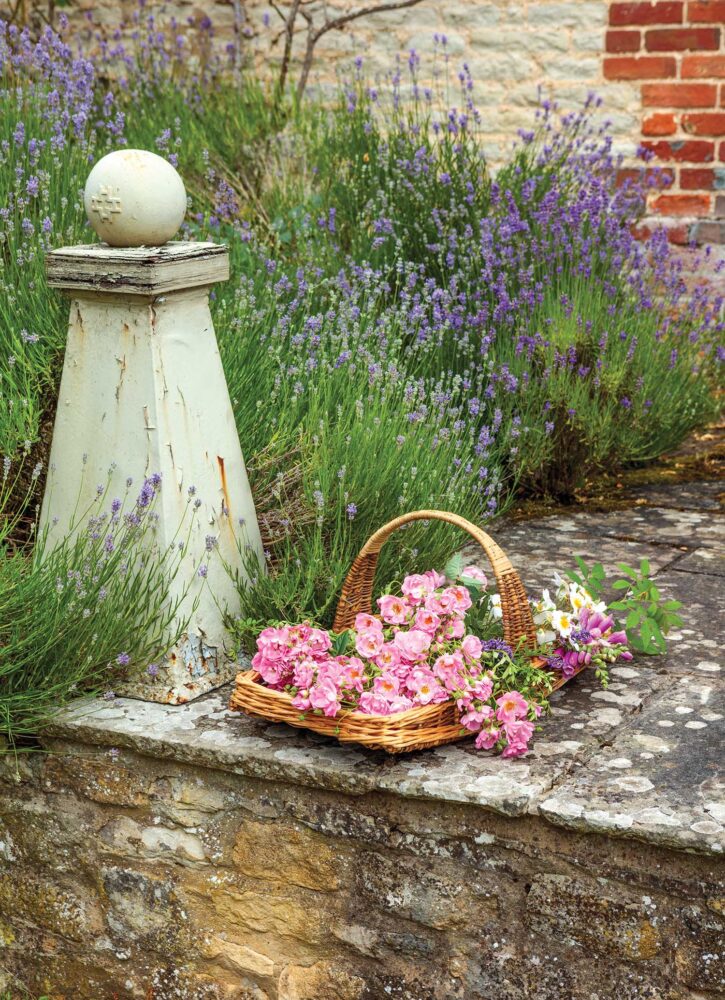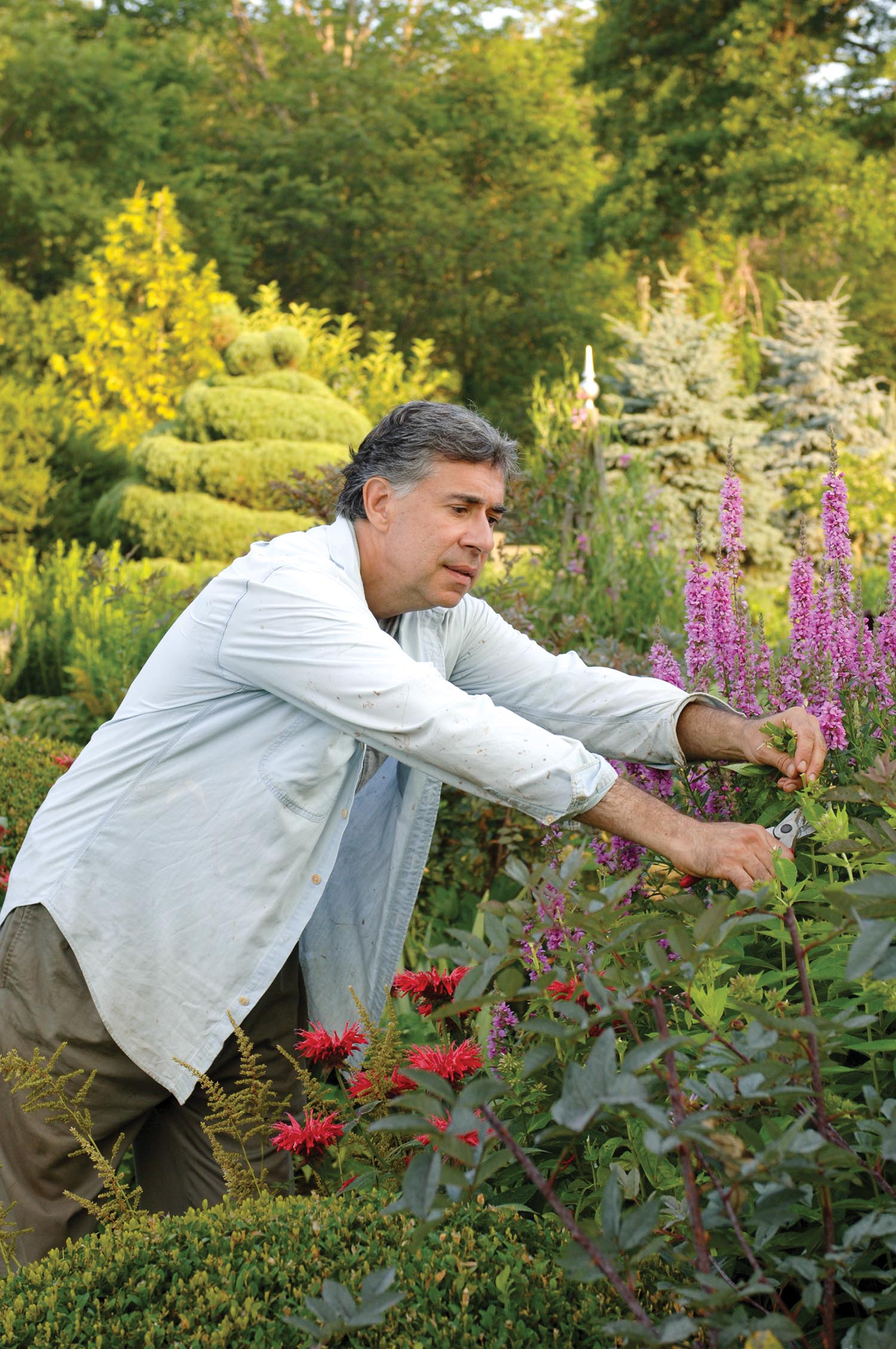
Photo by Stacy Bass
Gerard tends his garden daily—pruning, weeding, and deadheading.
For years, Gerard Pampalone dreamed of gardening Beanacre Farm. Even before he and his wife, Arlene Carpenter, finally became the proud owners of the property in 1995, Gerard was creating his plan, a process that entailed several European garden tours. But translating his design into the 3½-acre Fairfield, Connecticut, property proved a challenge. Gerard wanted to blend the formality of the gardens he discovered on those overseas visits with outdoor spaces that felt like home. Strong design was one goal but equally important was a scene that embraced friends and company.
Then Gerard had an aha moment—a realization that in order to create a garden that welcomed everyone, including the plants he was inviting into his domain, he had to carefully consider its layout. “The arrangement is what defines a garden,” he says. “It’s all about the framework.” While certain elements were already in place, such as a barn, pool, pavilion, stone cottage, and apple orchard, there was still plenty of room for Gerard to add his touch. He started by building a conservatory from materials shipped (in 22 boxes) directly from England, and that greenhouse became a wintertime “living room.” Most homeowners would bask in that structural achievement and call it a day—but not Gerard. His vision was to ground the cluster of buildings in a sense of place, and the plantings he chose were not just a casual nod to nature. Because he wanted to dig in and get his hands dirty, he looked past simply adding green-on-green clipped boxwoods and a few stately trees. Gerard wanted to truly garden with all the blossoms it entails.
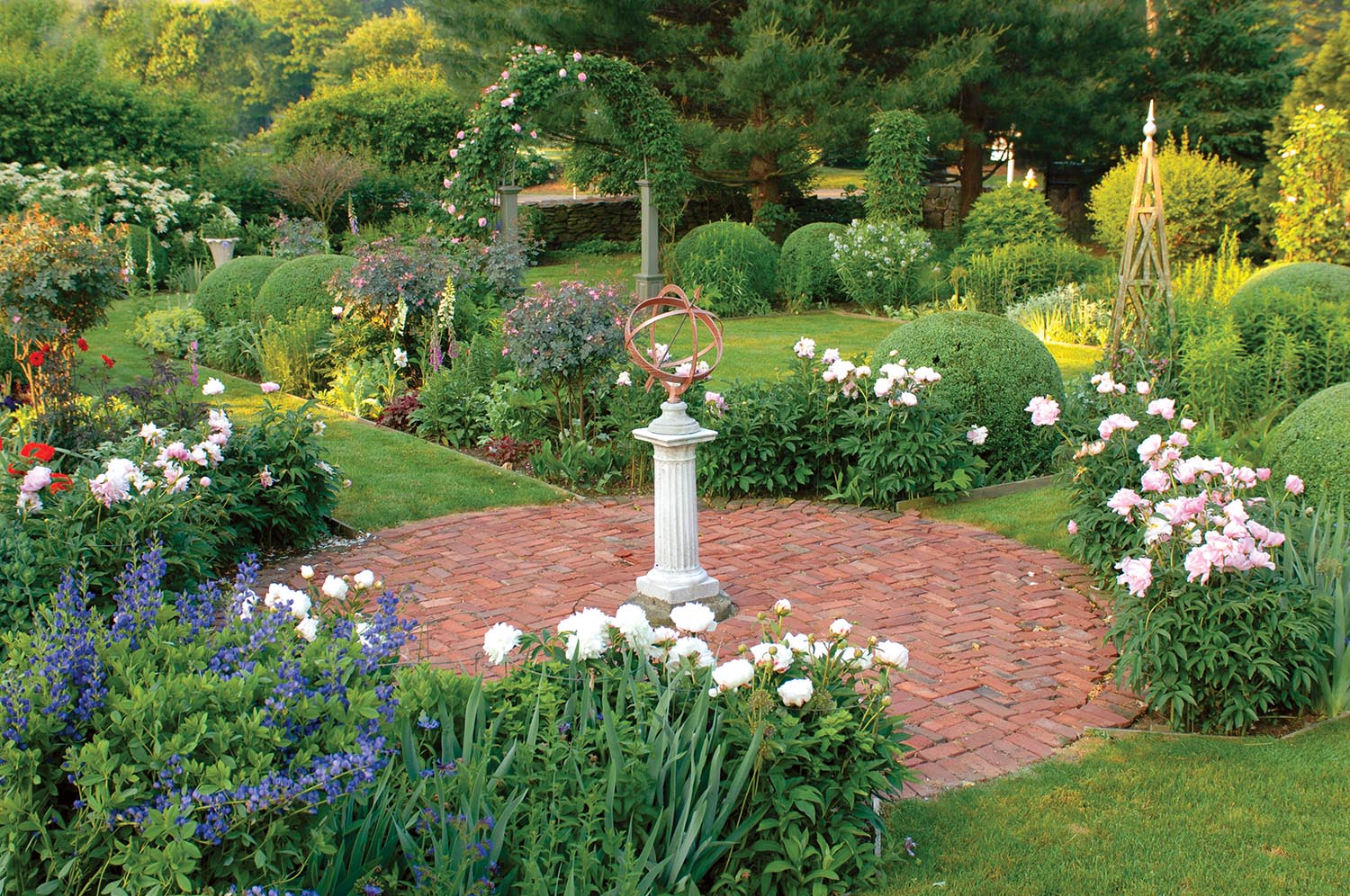
Photo by Stacy Bass
An armillary centered in a peony-and-perennial garden is just one focal point in a landscape that also includes ‘Constance Spry’ rose archways, tuteurs, and obelisks.
From his European treks, Gerard discovered that multiples were critical for making his vision a reality. He made a list of the perennials and annuals he couldn’t live without—and it was lengthy. Poppies, campanulas, thalictrums, echinaceas, anchusas, lupines, foxgloves, and echinops were just a few of the selections he wanted to plant to soften the spaces between 22 boxwood balls. And he didn’t want just one one of each—he needed bunches. However, those amped-up numbers of plants Gerard envisioned would easily burst anyone’s budget. Plus, many of those novelties were not readily available in this country. Never one to be dissuaded, Gerard took a class on seed-starting at the New York Botanical Garden. Then he went to work in the basement of the barn using an old train table, grow-lights installed by his electrician father-in-law, and a series of seed orders from Chiltern Seeds in the UK. Over time, Gerard created a carefully calibrated garden dialogue between patterns of hues and textures. He now keeps a calendar of what to start and when to sow, knowing that every spring starts a new marathon with seedlings.

Photo by Stacy Bass
The conservatory hosts parties in winter. In warmer weather, the festivities move outdoors among the beds softened in sedum, echinacea, and self-sown fennel. An armillary sphere accents the space.

Photo by Stacy Bass
Constance Spry’ roses form an arch above the entrance to the rose garden. A bed of lady’s mantles, foxgloves, and lamb’s ears flows around a stone orb fountain.
Throughout the process, Gerard has welcomed garden luminaries to Beanacre Farm to seek their advice. One such professional, local garden designer Paul Winsor, suggested leaving the “green headboard” of structural woody plants at the west end of the perennial garden to give it a backdrop. Similarly, Gerard framed the garden with a pair of large arches supporting climbing roses. And he still finds inspiration from regular trips to Europe, most recently in the form of tuteurs and obelisks. He purchased similar punctuation marks to give his garden instant height while supporting the roses and clematis he loves. And to break up expanses of lawn, Gerard has created points of interest using rusted metal wire orbs of varying sizes. To keep the garden ever evolving, Gerard continuously experiments with seeds of novelties while also striving to extend the performance as long as possible. While the spring timeslot is easy to fill, he’s always pushing for players with diversity and impact later into the season. For example, the rose garden is no longer devoted solely to roses but now includes companion perennials. And sunflowers grown from seed add a bit of drama with a late summer pop.
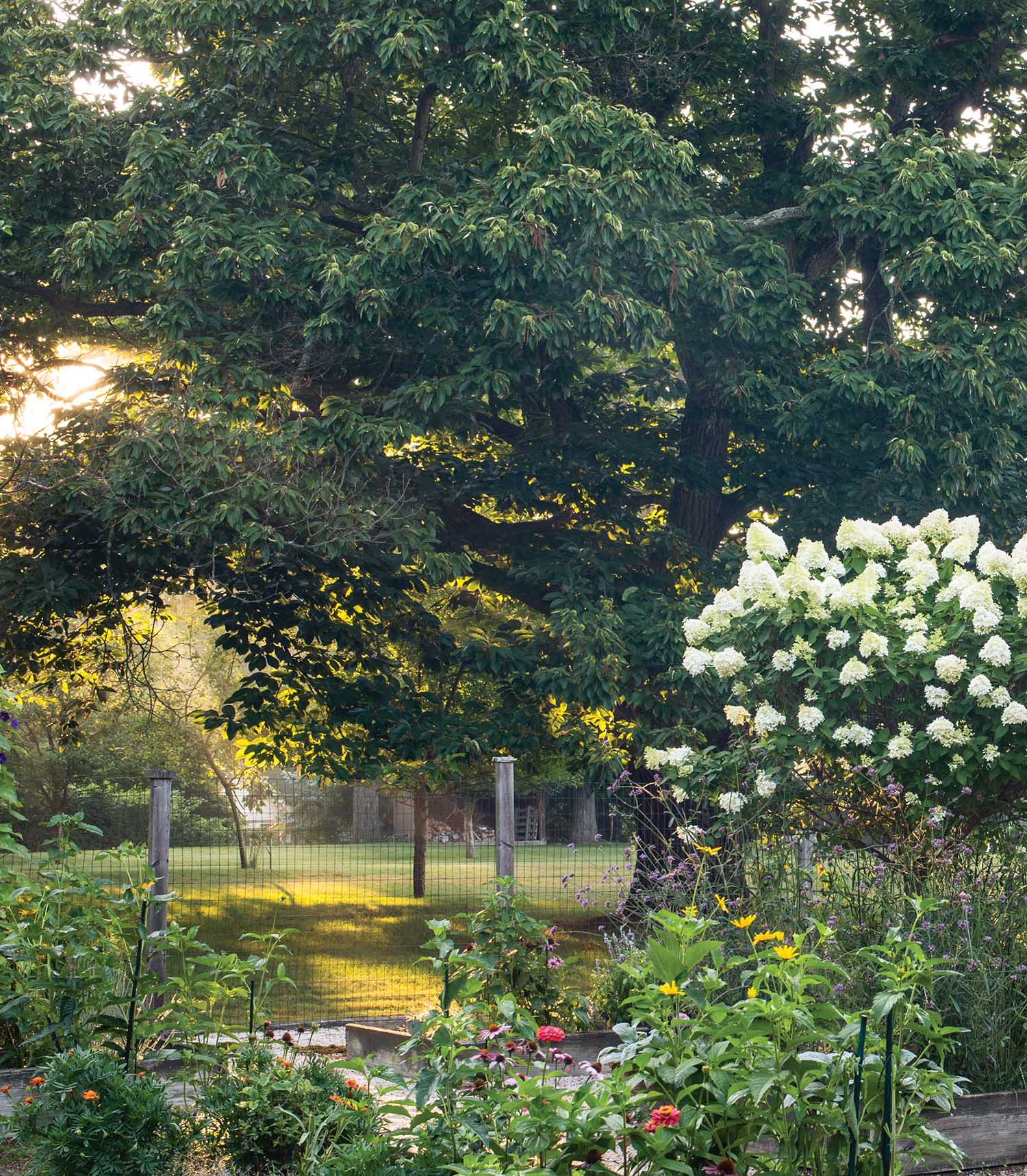
Photo by Stacy Bass
Beside the apple orchard, a fence protects a series of raised beds bristling with echinaceas and rudbeckias.
Most importantly, Gerard and Arlene take time to enjoy and share the oasis they’ve created. Not only do they spend most evenings in the outdoor pavilion relaxing by the fireplace, but they also invite friends over twice a month for informal gatherings. For the Pampalones, it’s all about company, camaraderie, and cordiality. “Just a handful of friends,” says Gerard. “Usually six to eight people nibbling on sliders. The wine flows, and everyone goes home happy.” But nobody says goodbye until Gerard has led them all on what he calls his “bragging tour” of the garden. That grand finale tour is invariably the evening’s crescendo, and it always receives a standing ovation.
By Tovah Martin | Photography by Stacy Bass
See more scenes from Beanacre Farm by following them on Instagram.


